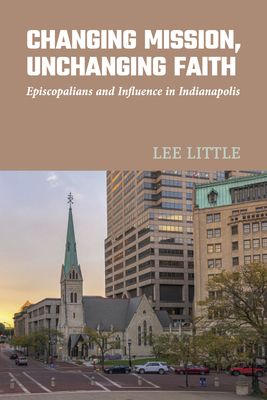Changing Mission, Unchanging Faith: Episcopalians and Influence in Indianapolis

Changing Mission, Unchanging Faith: Episcopalians and Influence in Indianapolis
A story of the church's transformation, told through the lens of a mid-American city.
Indianapolis is demographically close to the median American city and has experienced many of the same dynamics as other similarly sized American cities. Indianapolis is also home to a set of unique Episcopal institutions; the Diocese of Indianapolis has benefited from local wealth and close connections to the centers of civic power.
In Changing Mission, Unchanging Faith, Lee Little examines the ways that the Episcopal Diocese of Indianapolis has transformed from one of the most institutionalist religious groups in the city to one of the most progressive. Arguing that the diocese's unique wealth and status has enabled this transformation, Little also notes many of the tensions still inherent in the church's close connection to historic, class-based structures. In considering the ways in which the Episcopal Church in Indianapolis has evolved, and the ways that it continues to evolve, Little argues that the diocese represents an example of change that should be studied across the Episcopal Church and the broader landscape of American mainline Protestantism.
PRP: 350.89 Lei
Acesta este Prețul Recomandat de Producător. Prețul de vânzare al produsului este afișat mai jos.
280.71Lei
280.71Lei
350.89 LeiLivrare in 2-4 saptamani
Descrierea produsului
A story of the church's transformation, told through the lens of a mid-American city.
Indianapolis is demographically close to the median American city and has experienced many of the same dynamics as other similarly sized American cities. Indianapolis is also home to a set of unique Episcopal institutions; the Diocese of Indianapolis has benefited from local wealth and close connections to the centers of civic power.
In Changing Mission, Unchanging Faith, Lee Little examines the ways that the Episcopal Diocese of Indianapolis has transformed from one of the most institutionalist religious groups in the city to one of the most progressive. Arguing that the diocese's unique wealth and status has enabled this transformation, Little also notes many of the tensions still inherent in the church's close connection to historic, class-based structures. In considering the ways in which the Episcopal Church in Indianapolis has evolved, and the ways that it continues to evolve, Little argues that the diocese represents an example of change that should be studied across the Episcopal Church and the broader landscape of American mainline Protestantism.
Detaliile produsului









